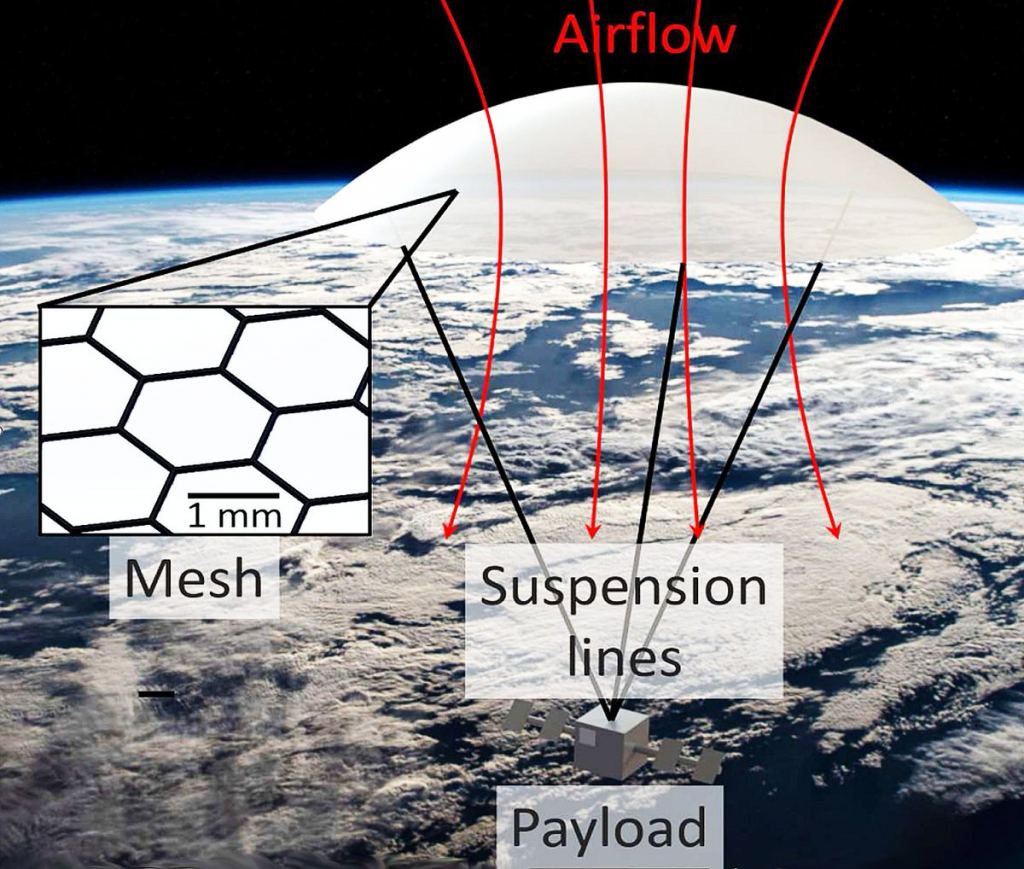A new Propulsion System Could Levitate Vehicles in the Earth’s Upper Atmosphere
By Andy Tomaswick
Sometimes it’s hard to remember that NASA also does atmospheric research too. While typically thought of as the province of the National Oceanic and Atmospheric Administration (NOAA), America’s space agency also has a vested interest in exploring our atmosphere and in the technologies that enable us to do so. As such, its NASA Institute for Advanced Concepts (NIAC) program provided a Phase I grant to a team from the University of Pennsylvania to develop a novel type of propulsion using only light to collect data in the Earth’s challenging-to-explore mesosphere.
The mesosphere is the part of the atmosphere that ranges from 50 km to 80 km, and it has several disadvantages for current exploration technologies. It’s too high for balloons or typical aircraft to reach, making standard high-altitude exploration technologies impractical. It’s also too low for satellites, as their orbit would degrade too quickly in its relatively thick soup of molecules, making the other typical space-based sensing platform impractical as well. The only way researchers have been able to explore it so far is through research rockets that only traverse it for a few minutes before falling back to Earth.
Enter a new technology from the lab of Dr. Igor Bargatin, a professor of mechanical engineering at the University of Pennsylvania. The technology takes advantage of a phenomenon known as photophoretic levitation to float devices simply by hitting them with light.
Credit – GALCIT Media YouTube Channel
That propulsion technology might sound similar to that used on a solar sail, but the delicate layers of foil used on solar sails would die a horrible death in the Earth’s atmosphere. The photophoretic effect, which has been known for almost a century, uses the heating of a solid compared to the ambient gas as a lifting force. As Dr. Bargatin’s press release on the NIAC website states, “The [photophoretic] force creates lift in structures that absorb light on the bottom yet stay cool on the top.”
Dr. Bargatin’s lab’s contribution to this century-old science is to make the first macroscale demonstration of a system using this technology. Previous attempts had all been on the micrometer scale, as the lifting force is extraordinarily weak, making it difficult to exert any significant lifting force on whatever payload it might be attached to.
The lab’s design relies heavily on the pressure its plates operate in, and it just so happens that the mesosphere, which ranges in pressure from 1-100 pascals, hits right in the sweet spot where the lifting action is most effective, creating enough lift to hold a centimeter-scaled probe in the air, potentially indefinitely. Even with only a few centimeters, there are plenty of miniaturized sensors that could be packed onto that platform to relay data that had before been accessible only by research rockets.
Credit – MarsU YouTube Channel
In fact, those microfliers could potentially stay aloft indefinitely if the technology was modified to utilize solar energy and have a day/night cycle where it would shift from ascending in the day to descending in the night. Dr. Bargatin and his team also believe that the technology could be modified slightly to enable horizontal thrust, allowing the sensing platform to travel to any point in the mesosphere using only light as a propulsion source.
As with all NIAC grants, this technology is still in the very early stages and is a long way before any mission with a payload will be floating into the mesosphere. However, with the proof of concept already complete and recently published, it seems likely that this novel type of propulsion technology could soon get its time in the Sun.
Learn More:
NASA / UPenn – Photophoretic Propulsion Enabling Mesosphere Exploration
Azadi et al. – Controlled levitation of nanostructured thin films for sun-powered near-space flight
UT – What Is The Atmosphere?
UT – Composition of the Earth’s Atmosphere
UT – Did You Know the Earth’s Atmosphere Extends Beyond the Orbit of the Moon?
Lead Image:|
System diagram of an photophoretic sensor system.
Credit – Igor Bargatin
The post A new Propulsion System Could Levitate Vehicles in the Earth’s Upper Atmosphere appeared first on Universe Today.

January 22, 2023 at 09:49AM
via Universe Today read more...

Post a Comment